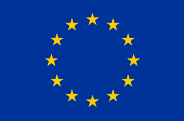When and when not to apply the CE mark?
Affixing the CE marking to a product is a declaration by the manufacturer that the product in question has been designed and manufactured to meet the essential safety requirements and creates a presumption that the product is entitled to free circulation within the EU/EEA market. The CE mark gives no indication of the quality of a product but means that the manufacturer has checked that the product complies with all essential requirements. Not all products must bear the CE mark – only those product categories subject to specific Directives require the mark. Other products must still be safe but must not be CE marked.
Objective
This module has the objective of ensuring that the meaning of the CE mark is clear and when it should or should not be used.
Learning outcomes
The CE mark is the most visible aspect of the entire conformity process, but its meaning may not always be clearly understood. Through attending this module, participants will understand the circumstances when the CE marking is or isn’t required and how to get this right:
- How the EU’s conformity marking system works in practice and what the CE mark means.
- How the CE mark relates to all aspects of a product and which specific pieces of legislation may be relevant.
- How the CE mark relates to key product safety aspects.
- How to apply the CE mark system in practice.
Tags, sub-topics, combination with other modules
Responsibilities of manufacturers. Specific issues and challenges faced by small businesses. Preparing a technical file. Contents of technical file. CE marking and related issues.
- This module can be used stand-alone or in combination with other modules related to exporting products to the EU in general and/or sector specific, and to conformity assessment.



